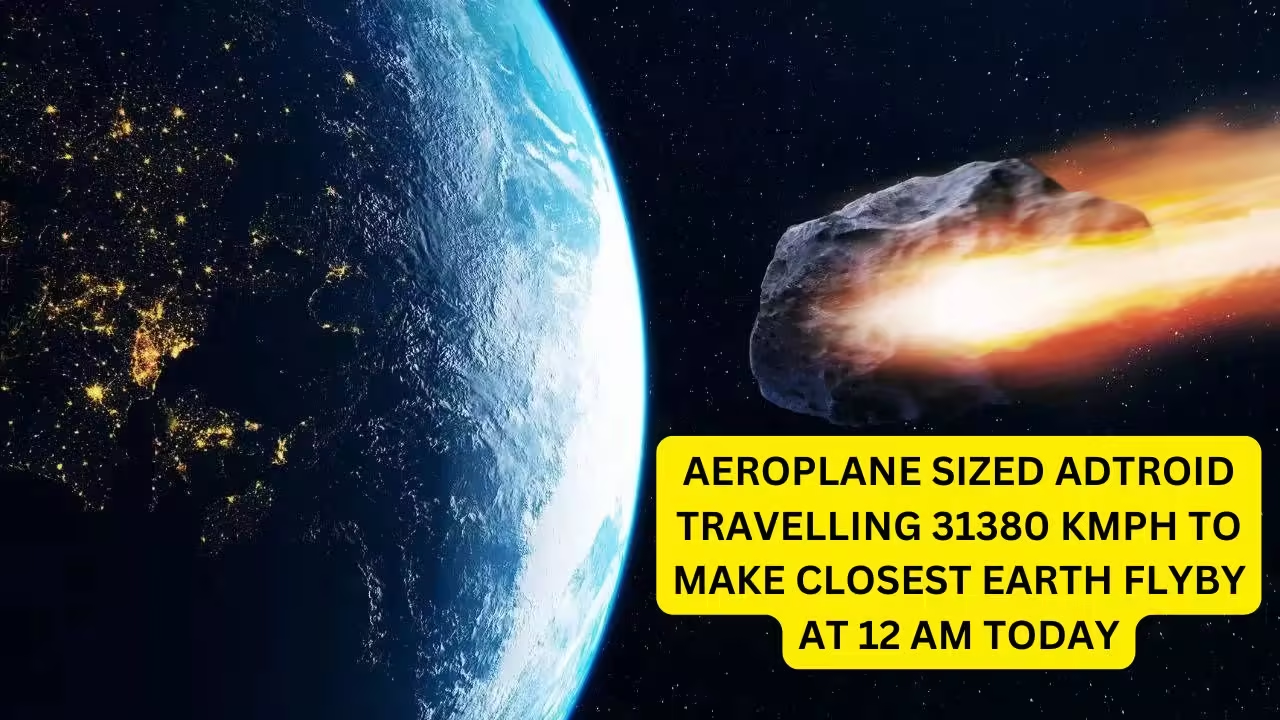In the realm of space exploration and astronomical events, high-speed flybys are particularly captivating. Imagine an android or spacecraft traveling at an astonishing speed of 31,380 km/h and making a close approach to Earth. This scenario, while hypothetical in the context of an android, is rooted in the real dynamics of high-velocity space objects. This article delves into the intricacies of such high-speed flybys, exploring their implications, technological advancements, and scientific significance.
Understanding the Speed: 31,380 km/h in Context
To appreciate the speed of 31,380 km/h, it helps to put it into perspective. This velocity translates to approximately 8.7 km/s, which is significantly faster than any man-made object we have launched to date. For instance, the Parker Solar Probe, one of the fastest spacecraft ever built, reaches speeds of up to 700,000 km/h when close to the Sun, but its journey involves complex orbital mechanics and varying speeds.
The speed of 31,380 km/h is still quite impressive and is roughly 10 times the speed of sound at sea level. Such speeds are typically associated with high-energy events and advanced propulsion technologies. In the context of a flyby, this would mean that the object would cover the distance between Earth and the Moon (about 384,400 km) in just over 12 hours.
The Mechanics of a Close Flyby
A close flyby involves an object passing near a celestial body, such as Earth, without entering its gravitational sphere of influence. For an object traveling at 31,380 km/h, precise calculations are necessary to ensure a safe and accurate approach.
Trajectory and Navigation
For a spacecraft or android traveling at such high speeds, trajectory planning is critical. The trajectory must be meticulously calculated to avoid collisions and ensure that the object passes within the desired distance from Earth. This involves sophisticated mathematical modeling and real-time adjustments.
Modern space missions use advanced navigation systems that incorporate real-time data from various sensors and ground-based tracking stations. These systems help in adjusting the object’s path to account for gravitational perturbations and other factors.
Atmospheric Considerations
At speeds exceeding 30,000 km/h, atmospheric drag becomes a significant factor if the object enters Earth’s atmosphere. While a flyby may avoid atmospheric entry, any interaction with the upper atmosphere could result in extreme heating and pressure. Spacecraft designed for such speeds often have heat shields and other protective measures to mitigate these effects.
Technological Marvels Behind High-Speed Travel
Achieving and sustaining such high velocities requires cutting-edge technology and engineering. Here are some key technologies involved:
Advanced Propulsion Systems
Propulsion systems for high-speed travel include chemical rockets, ion thrusters, and nuclear thermal propulsion. Each of these systems has its advantages and challenges:
- Chemical Rockets: Provide high thrust and are used for initial launches but are less efficient for maintaining high speeds over long distances.
- Ion Thrusters: Offer efficient thrust and can operate continuously, making them suitable for extended high-speed journeys.
- Nuclear Thermal Propulsion: Provides a powerful and efficient means of propulsion but involves complex engineering and safety considerations.
Onboard Systems
High-speed objects need robust onboard systems for navigation, communication, and data collection:
- Navigation Systems: Include star trackers, gyroscopes, and accelerometers to precisely control the object’s trajectory.
- Communication Systems: High-speed data transmission systems are crucial for sending information back to Earth and receiving commands.
- Data Collection Instruments: Instruments designed to collect scientific data must be able to withstand high speeds and environmental extremes.
Scientific Significance of High-Speed Flybys
High-speed flybys offer unique opportunities for scientific research and exploration. They allow scientists to:
Study Cosmic Phenomena
By observing how high-speed objects interact with various cosmic phenomena, researchers can gain insights into the nature of space dust, radiation, and magnetic fields.
Test Technology
Flybys provide a real-world testing ground for advanced technologies, helping to refine propulsion systems, navigation techniques, and protective measures.
Gather Data on Celestial Bodies
Close flybys can be used to study the composition and characteristics of other celestial bodies, such as asteroids, comets, or even distant planets. This data is invaluable for understanding the solar system and beyond.
Recent Developments in High-Speed Space Missions
Recent advancements in space exploration have brought high-speed missions into sharper focus. Here are some notable developments:
NASA’s Parker Solar Probe
Launched in 2018, the Parker Solar Probe is designed to study the Sun’s outer atmosphere and is one of the fastest spacecraft ever built. It is expected to reach speeds of up to 700,000 km/h as it approaches the Sun.
ESA’s Hera Mission
The European Space Agency’s Hera mission, scheduled for launch, aims to study the Didymos binary asteroid system. The mission will involve high-speed maneuvers to closely observe and analyze these asteroids.
Emerging Propulsion Technologies
Innovations in propulsion technology, such as the development of advanced ion thrusters and theoretical concepts like antimatter propulsion, are pushing the boundaries of what is possible in high-speed space travel.
FAQs About High-Speed Spaceflybys
Q: What are the risks associated with high-speed space flybys?
A: Risks include potential collisions with space debris, atmospheric entry problems, and challenges in precise navigation. Advanced technology and careful planning help mitigate these risks.
Q: How do scientists track high-speed objects during a flyby?
A: Scientists use a combination of ground-based telescopes, space-based observatories, and onboard sensors to track and monitor high-speed objects.
Q: What kind of data can be collected from a high-speed flyby?
A: Data collected can include information about cosmic radiation, dust, magnetic fields, and the characteristics of celestial bodies being observed.
Q: Are there any future missions planned that involve high-speed flybys?
A: Yes, several missions are planned or proposed that involve high-speed flybys, including studies of asteroids, comets, and distant planetary systems.
Conclusion
The concept of a high-speed flyby, such as an android traveling at 31,380 km/h, encapsulates the cutting-edge of space exploration and technological innovation. From the intricate details of trajectory planning to the advanced technologies required, high-speed space missions offer profound scientific opportunities and push the boundaries of human ingenuity. As we continue to explore and understand these high-speed phenomena, the potential for new discoveries and advancements in space travel remains boundless.



